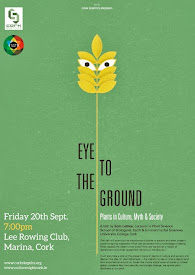Science Gallery: Wexford Wildfowl Reserve Picture Special
This weekend, Communicate Science visited Co. Wexford and the Wexford Wildfowl Reserve. The reserve is based in the Wexford Slobs - lands reclaimed from the sea in the 1840's, with the building of the sea wall and the pumphouse (pictured). A history of the land reclamation projects in Wexford harbour is available here.
The North Slobs was land reclaimed from mudflats for agricultural purposes. A long dyke was constructed to keep out the sea and the land was kept dry by the pumps housed in the pump house. The traditional use of the land for winter crops and summer grazing is still maintained.
The North Slob lies three metres below sea level so a pumping system is required to remove surplus rainwater into the harbour. In 1850, the pumphouse housed a Watt Steam Pump. This remained in use until the 1940's. In 1912, the building was extended and a Reece Wolverhampton Vane Pump was installed. This pump is still maintained as aback-up pump to this day. It has the potential to pump up to 100 tons of water a minute and is powered by a six-cylinder diesel engine.
In the 1950's this diesel engine was replaced by an electric motor, while the present Primary Electric Pump was installed in the late 1960's and can pump water from the North Slob at a rate of 64 tons per minute.
This reclamation and drainage provides a unique environment for wildlife to flourish and the reserve is supported by an excellent visitor centre (with FREE entry) maintained for the Department of Environment, Heritage and Local Government by National Parks and Wildlife.
One interesting piece of information (which I picked up in the outstanding visitor centre) was that in 1951, the managing director of Guinness, Sir Hugh Beaver was shooting on the North Slob when he got into a discussion with some companions about whether the Golden Plover was the fastest game bird in Europe. This conversation inspired him to publish the first edition of the Guinness Book of Records which was published in 1955.
There is also an interesting display depicting some important stages in the evolution of dinosaurs to birds.
The North Slob and the adjacent Raven Nature Reserve are also Ireland's only hare sanctuary with up to 200 hares present at any one time.
The Raven Nature Reserve makes up the major part of the sand dune system, at the north side of the entrance to Wexford Harbour and forms the boundary of the North Slobs to the east. The dune system was heavily planted with conifers during the 1930's which means that what was once, botanically, the finest dune system in Ireland is now mostly conifer plantations with small areas of dune remaining. It's still well worth a visit and is a popular spot for walking.
J. Michael Wilson's poem The Raven captures something of the history and the biodiversity of the area:
The North Slobs was land reclaimed from mudflats for agricultural purposes. A long dyke was constructed to keep out the sea and the land was kept dry by the pumps housed in the pump house. The traditional use of the land for winter crops and summer grazing is still maintained.
The North Slob lies three metres below sea level so a pumping system is required to remove surplus rainwater into the harbour. In 1850, the pumphouse housed a Watt Steam Pump. This remained in use until the 1940's. In 1912, the building was extended and a Reece Wolverhampton Vane Pump was installed. This pump is still maintained as aback-up pump to this day. It has the potential to pump up to 100 tons of water a minute and is powered by a six-cylinder diesel engine.
In the 1950's this diesel engine was replaced by an electric motor, while the present Primary Electric Pump was installed in the late 1960's and can pump water from the North Slob at a rate of 64 tons per minute.
One interesting piece of information (which I picked up in the outstanding visitor centre) was that in 1951, the managing director of Guinness, Sir Hugh Beaver was shooting on the North Slob when he got into a discussion with some companions about whether the Golden Plover was the fastest game bird in Europe. This conversation inspired him to publish the first edition of the Guinness Book of Records which was published in 1955.
There is also an interesting display depicting some important stages in the evolution of dinosaurs to birds.
The North Slob and the adjacent Raven Nature Reserve are also Ireland's only hare sanctuary with up to 200 hares present at any one time.
The Raven Nature Reserve makes up the major part of the sand dune system, at the north side of the entrance to Wexford Harbour and forms the boundary of the North Slobs to the east. The dune system was heavily planted with conifers during the 1930's which means that what was once, botanically, the finest dune system in Ireland is now mostly conifer plantations with small areas of dune remaining. It's still well worth a visit and is a popular spot for walking.
J. Michael Wilson's poem The Raven captures something of the history and the biodiversity of the area:
On Nature's dunes man-planted pines-
Create a bastion to the tides.
High skies greet primroses, orchids, butterflies;
The darkness wakens badgers, owls;
While woddcock rode across the dusk
To the cries of plover, geese and seals-
Music for the toads' shrill evening song.

































0 comments:
Post a Comment